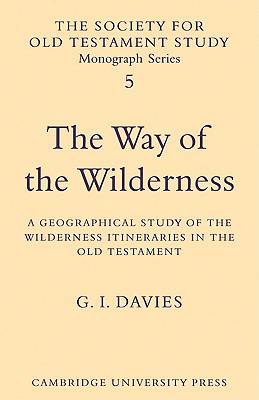
- Afhalen na 1 uur in een winkel met voorraad
- Gratis thuislevering in België vanaf € 30
- Ruim aanbod met 7 miljoen producten
- Afhalen na 1 uur in een winkel met voorraad
- Gratis thuislevering in België vanaf € 30
- Ruim aanbod met 7 miljoen producten
Zoeken
The Way of the Wilderness
A Geographical Study of the Wilderness Itineraries in the Old Testament
G I Davies
€ 64,95
+ 129 punten
Omschrijving
The Old Testament accounts of the Exodus contain various indications of the routes taken by the Israelites and the so-called wilderness itineraries appear to be very precise. From the earliest times, students of the Bible have tried to relate references in the texts to place names known in their own day. In this monograph Dr Davies traces the beginnings of such studies as they emerge from Jewish, Christian and Arabic writings and reviews both these and more recent theories in the light of modern biblical scholarship and archaeological exploration. In the process he finds it necessary to look again at major problems of bibliographical geography such as the identity of the 'Red Sea' and the location of Mount Sinai. Old Testament scholars will not be alone in finding this monograph of interest. Archaeologists, historical geographers and ancient historians will value it as a background to their own work on the period and Dr Davies' presentation ensures that this book may usefully be studied by the non-specialist.
Specificaties
Betrokkenen
- Auteur(s):
- Uitgeverij:
Inhoud
- Aantal bladzijden:
- 152
- Taal:
- Engels
- Reeks:
- Reeksnummer:
- nr. 5
Eigenschappen
- Productcode (EAN):
- 9780521104098
- Verschijningsdatum:
- 19/03/2009
- Uitvoering:
- Paperback
- Formaat:
- Trade paperback (VS)
- Afmetingen:
- 140 mm x 216 mm
- Gewicht:
- 199 g

Alleen bij Standaard Boekhandel
+ 129 punten op je klantenkaart van Standaard Boekhandel
Beoordelingen
We publiceren alleen reviews die voldoen aan de voorwaarden voor reviews. Bekijk onze voorwaarden voor reviews.








